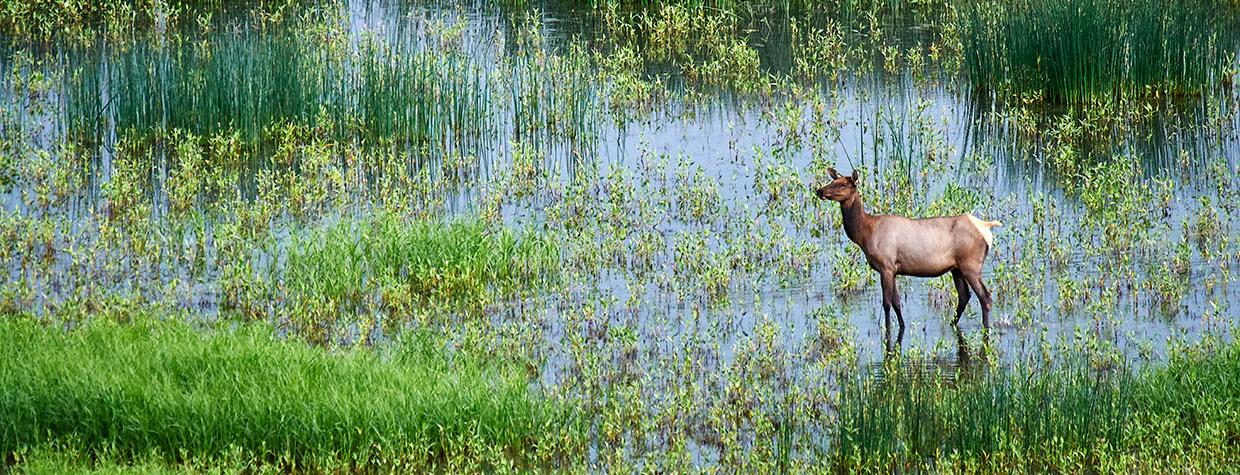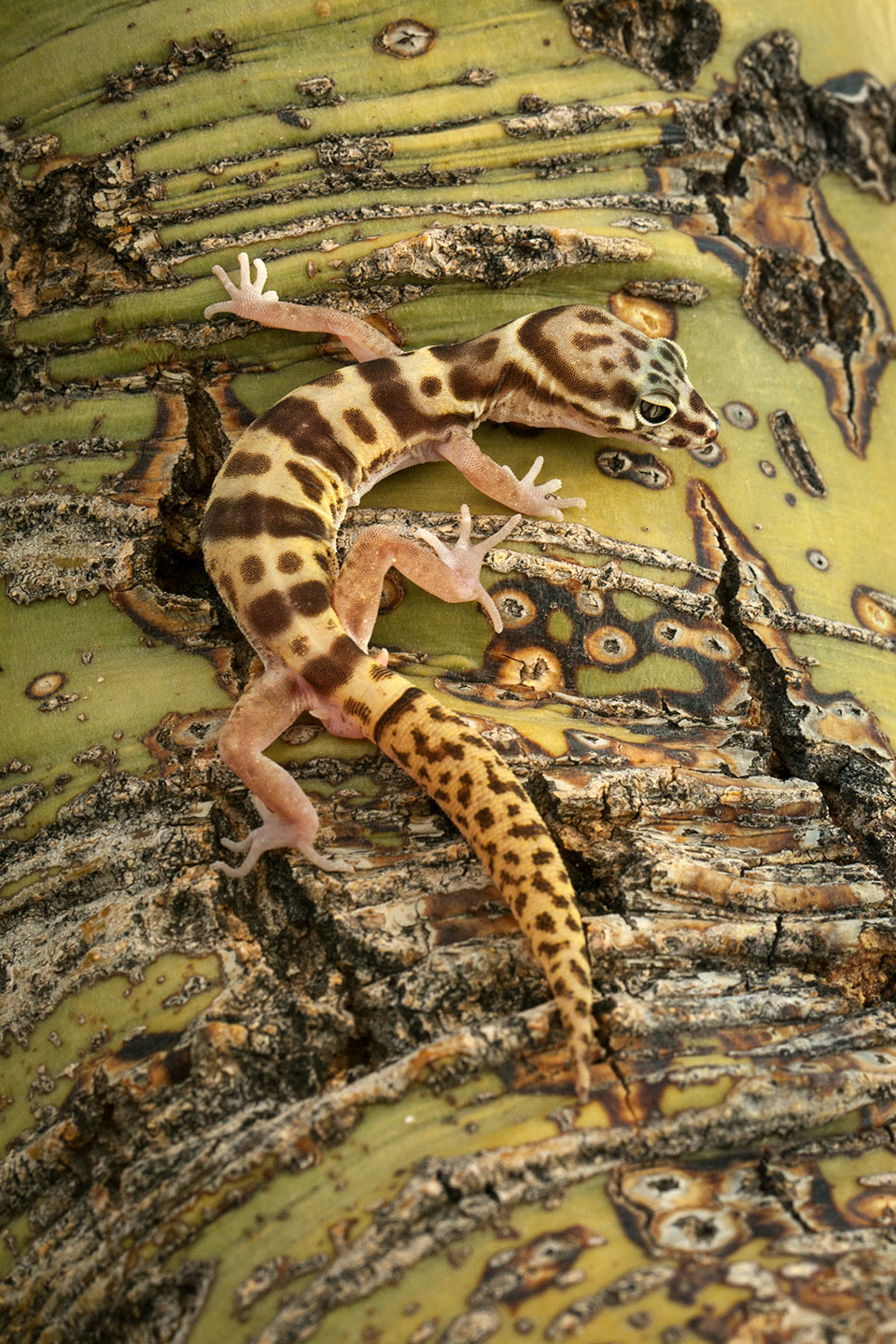
A Western banded gecko (Coleonyx variegatus) clings to the bark of a paloverde tree. Found in a wide range of habitats in the American Southwest, this species is the only gecko native to Arizona; a non-native species, the Mediterranean house gecko, can often be spotted in the state’s urban areas.
Eirini Pajak
Canon EOS 5D Mark II, 1/80 Sec, F/16, ISO 800, 100 MM lens
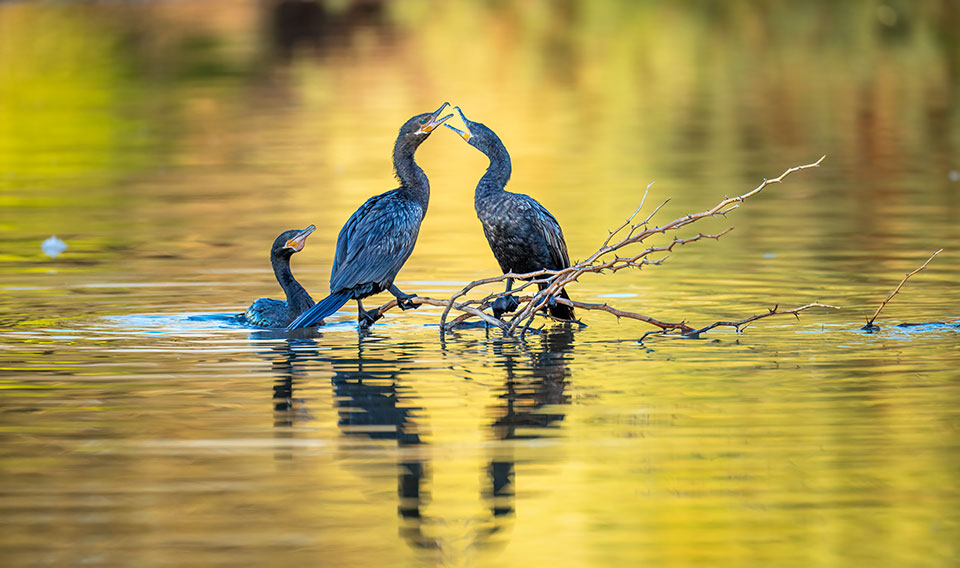
Neotropic cormorants (Nannopterum brasilianum) hash out a territorial dispute at the Riparian Preserve at Water Ranch in Gilbert, a Phoenix suburb. Once rarely seen in Arizona, neotropic cormorants have increased their presence in the state in recent decades.
Jack Dykinga
SONY ALPHA 1, 1/1250 SEC, F/4.5, ISO 800, 600 MM LENS
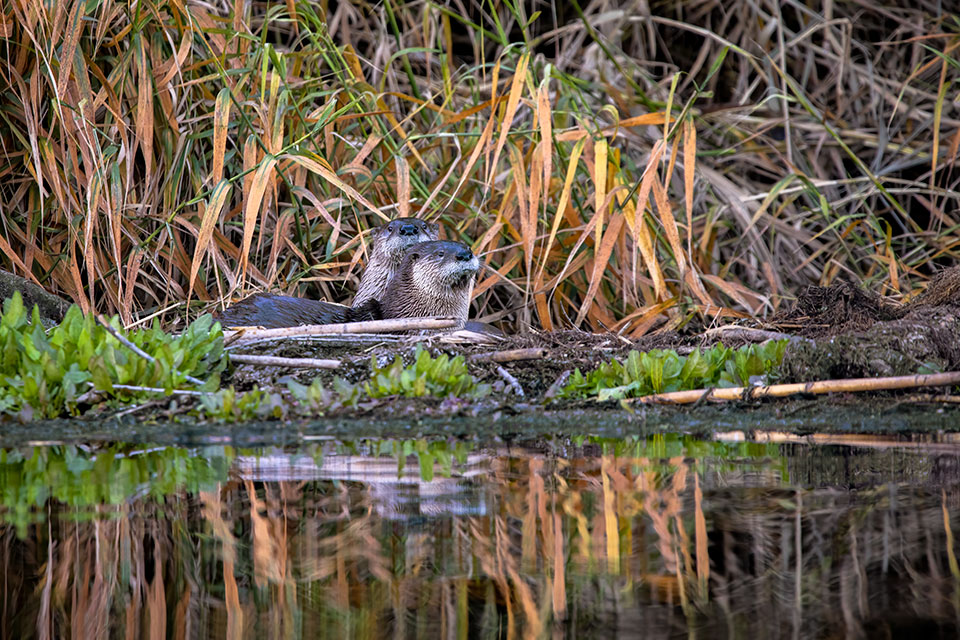
A pair of North American river otters (Lontra canadensis) rest amid riparian vegetation along the Salt River, a key Central Arizona waterway. Found along the Salt and Verde rivers and their tributaries, river otters can hold their breath underwater for up to eight minutes.
Bruce D. Taubert
CANON EOS R5, 1/320 SEC, F/6.3, ISO 1600, 600 MM LENS
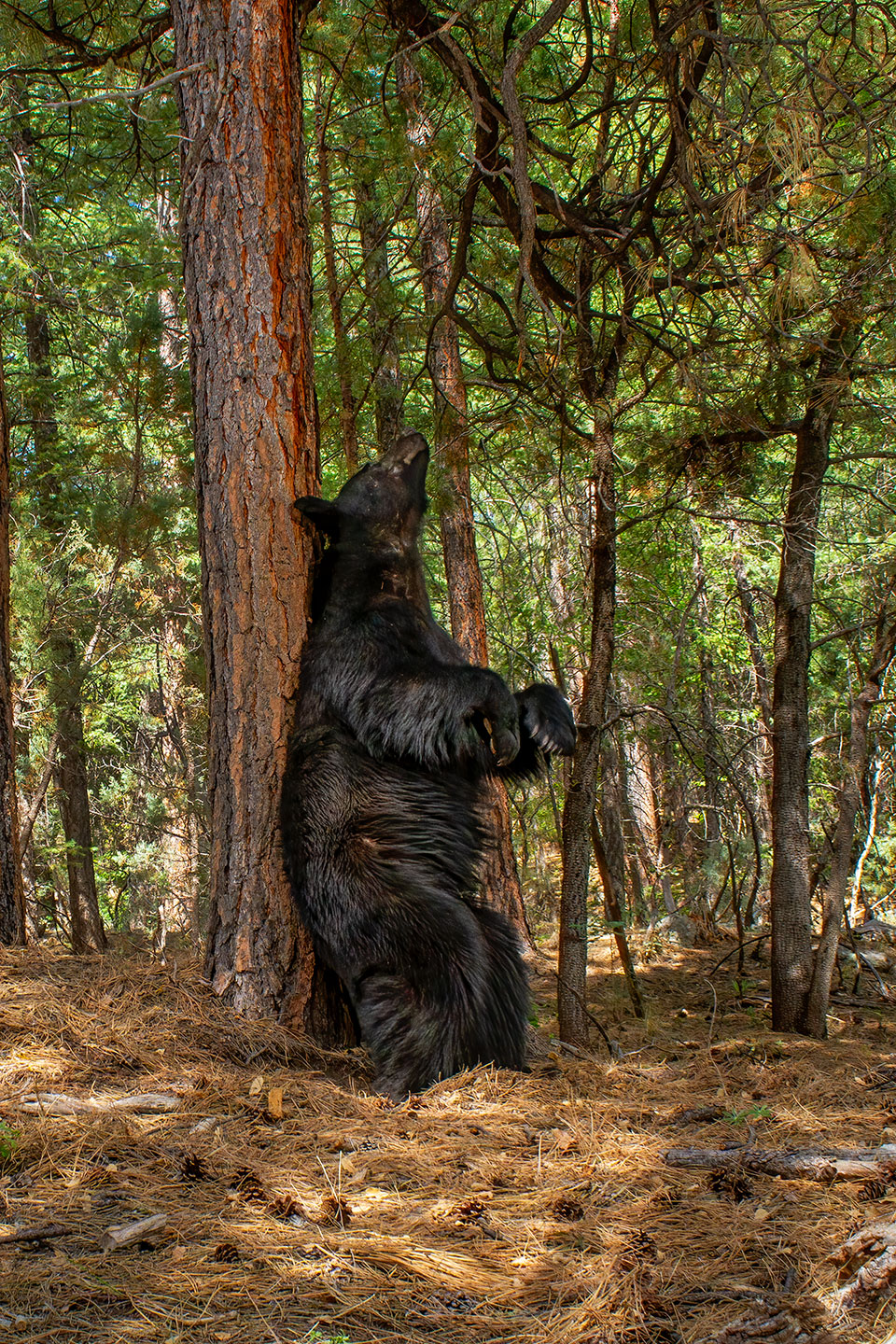
In a photo made using a camera trap, a black bear (Ursus americanus) scratches its back on a ponderosa pine north of Payson. Generally active between April and October, black bears excel at climbing and have also been known to reach running speeds of 30 mph over short distances.
Bruce D. Taubert
CANON EOS 7D, 1/200 SEC, F/10, ISO 640, 18 MM LENS
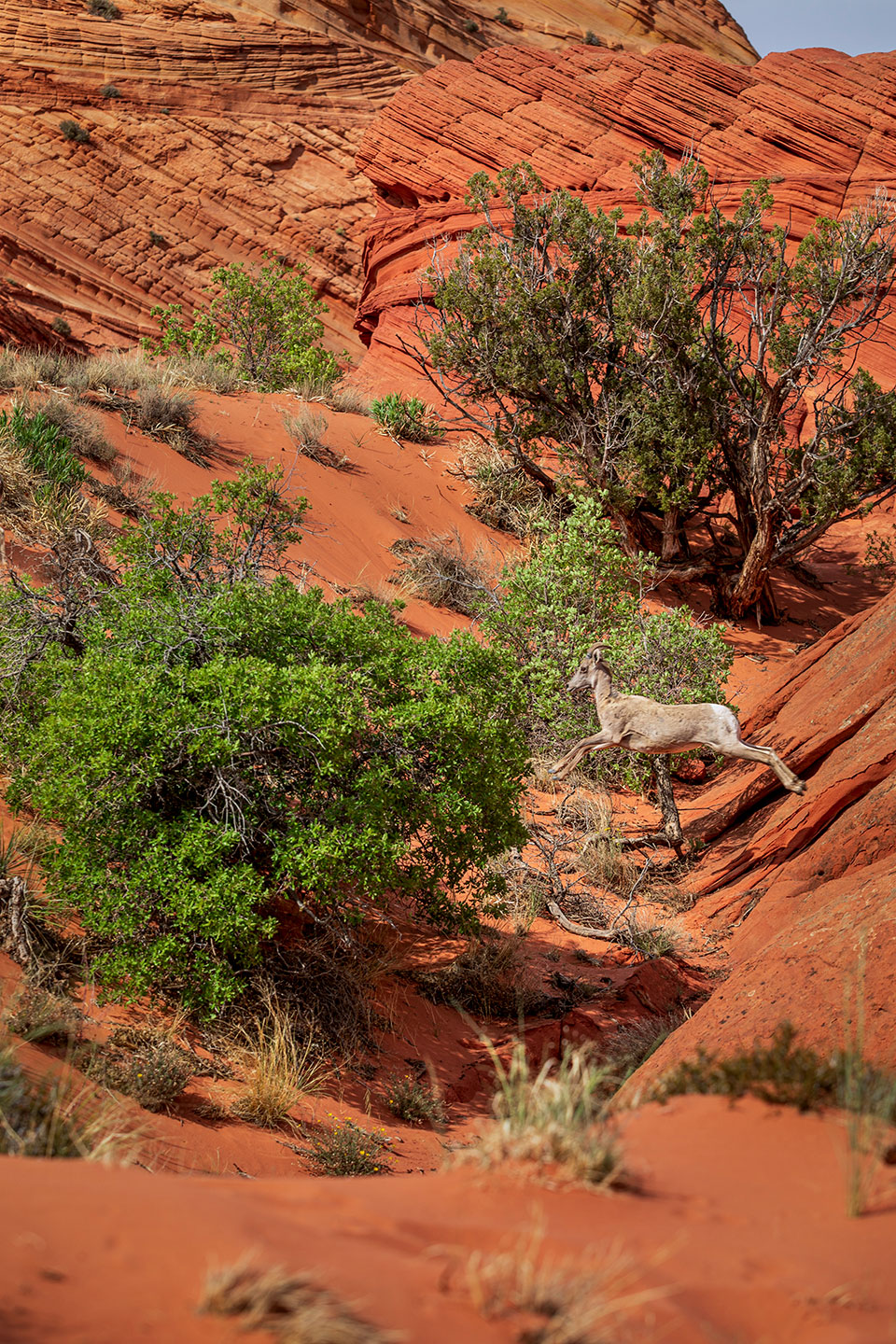
A desert bighorn (Ovis canadensis nelsoni) ewe makes a leap across a gap at Coyote Buttes South, part of Northern Arizona’s Vermilion Cliffs National Monument. A combination of hard outer hooves and soft inner pads allows desert bighorns to confidently bound nearly 20 feet from ledge to ledge.
Tom Brownold
CANON EOS 5D MARK IV, 1/400 SEC, F/5.6, ISO 200, 108 MM LENS
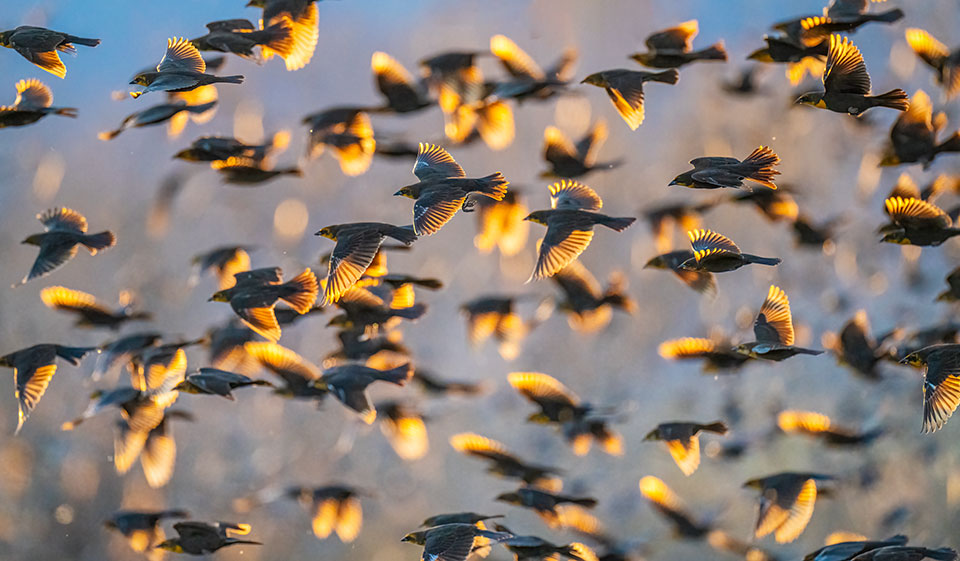
Yellow-headed blackbirds (Xanthocephalus xanthocephalus) fill the sky over Whitewater Draw, a Southeastern Arizona site known for attracting resident and migratory birds. Famous for forming large flocks, these blackbirds are also known for their call, described as sounding like a rusty gate opening.
Jack Dykinga
SONY ALPHA 1, 1/2000 SEC, F/5.6, ISO 6400, 840 MM LENS
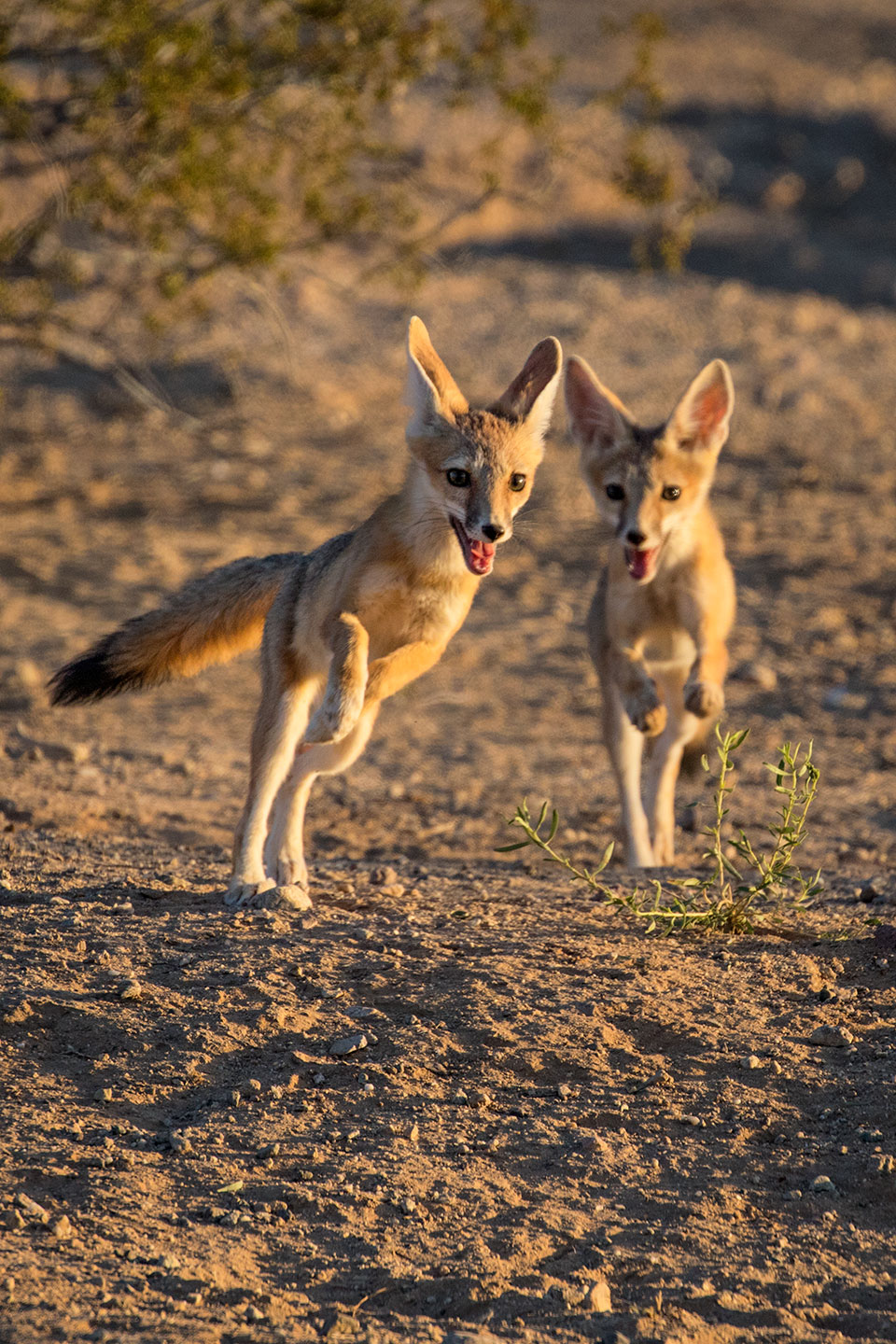
Kit foxes (Vulpes macrotis) frolic near Tonopah, west of the Phoenix area. The smallest and most elusive of Arizona’s three fox species, kit foxes typically are found in sandy desert areas, where they spend daytime in underground dens to avoid the heat.
Bruce D. Taubert
CANON EOS 7D MARK II, 1/1250 SEC, F/7.1, ISO 640, 400 MM LENS
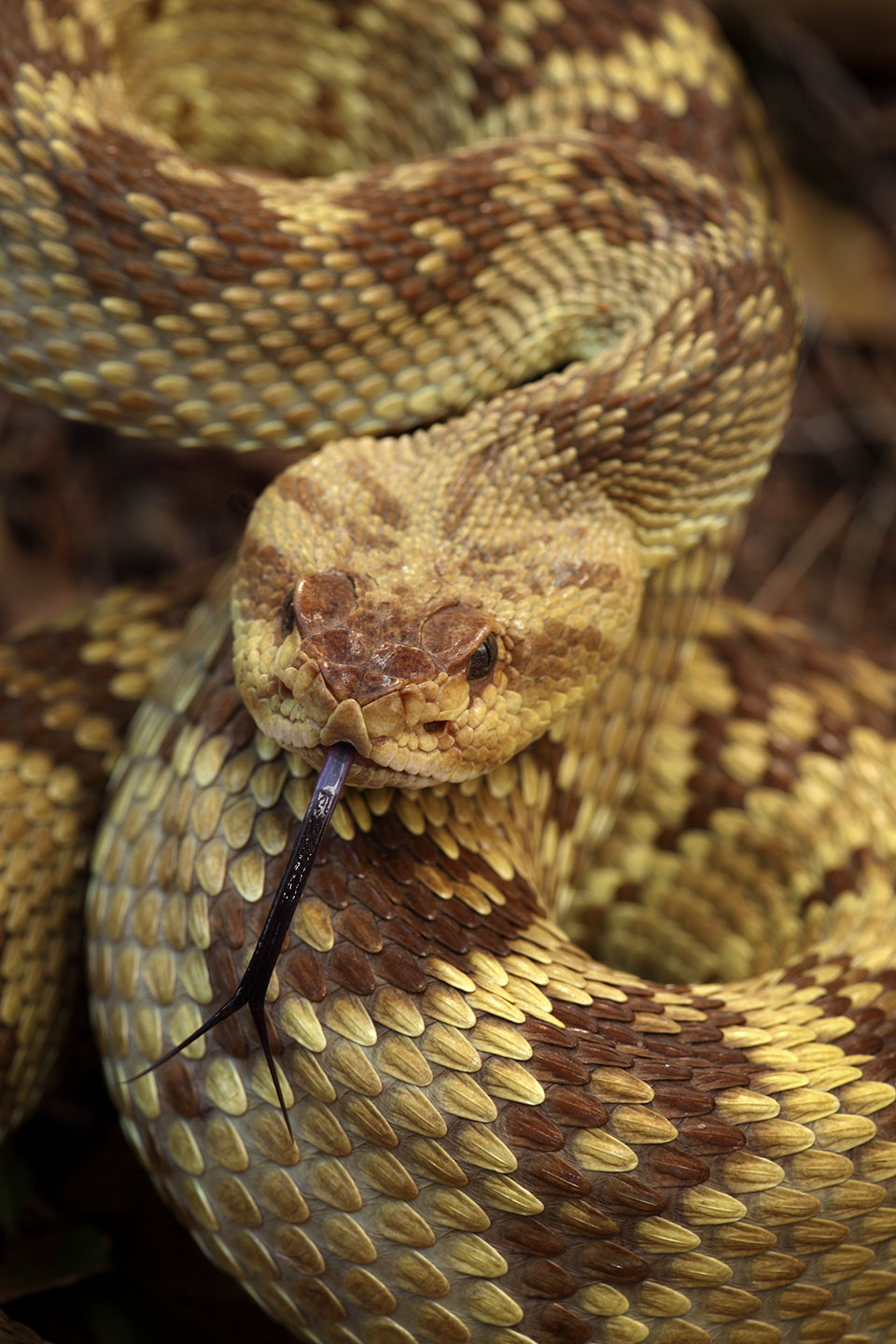
A black-tailed rattlesnake (Crotalus molossus) uses its tongue to taste the air in the Chiricahua Mountains of Southeastern Arizona. This rattlesnake species is found in much of Southern Arizona and, like other rattlesnakes, is capable of delivering a large amount of potent venom with its bite.
John Cancalosi
CANON EOS 5D MARK II, 1/60 SEC, F/9, ISO 200, 180 MM LENS
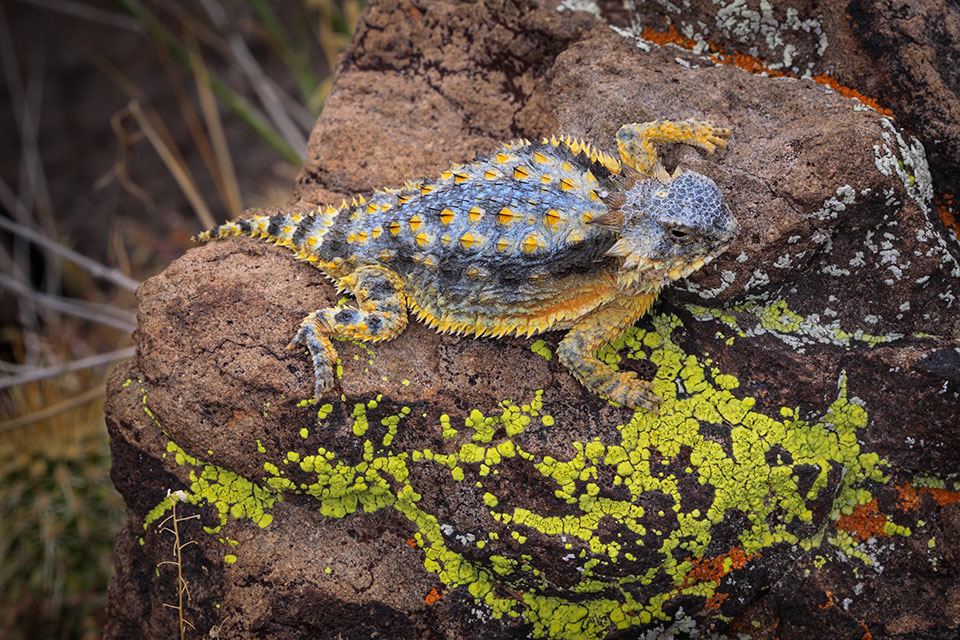
On a lichen-stained rock at Sunset Point, north of Phoenix, a regal horned lizard (Phrynosoma solare) catches some rays. Inhabiting valleys and foothills in Central and Southeastern Arizona, regal horned lizards primarily eat ants but will also feed on beetles and other insects.
Bruce D. Taubert
CANON EOS 5D, 1/80 SEC, F/16, ISO 400, 100 MM LENS
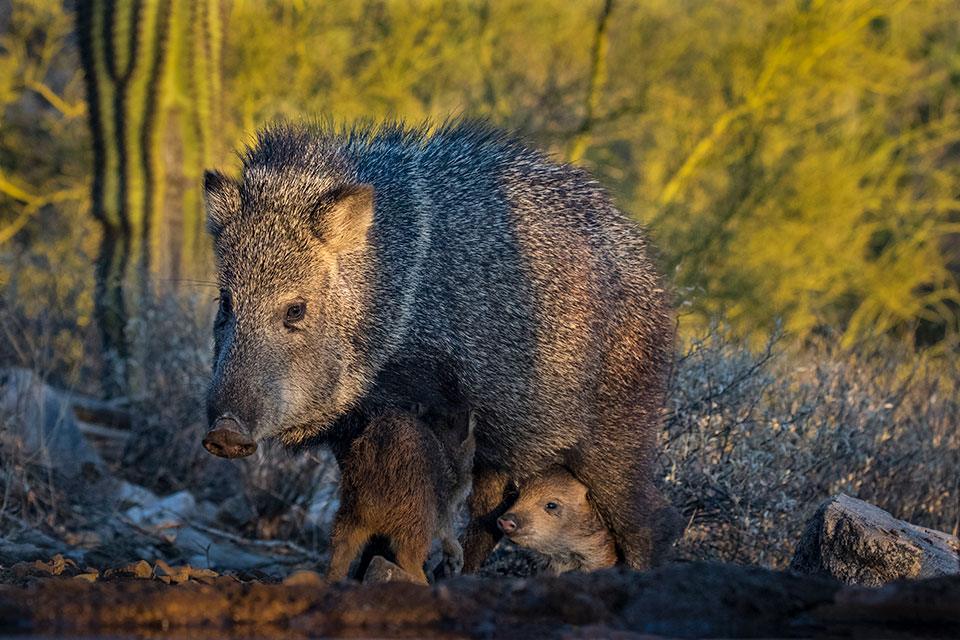
A collared peccary (Pecari tajacu), commonly known as a javelina, guards its young in a desert landscape near Marana, northwest of Tucson. An iconic Sonoran Desert species, collared peccaries typically travel in family herds of up to 30 individuals.
Bruce D. Taubert
CANON EOS-1D X MARK II, 1/640 SEC, F/8, ISO 1600, 170 MM LENS
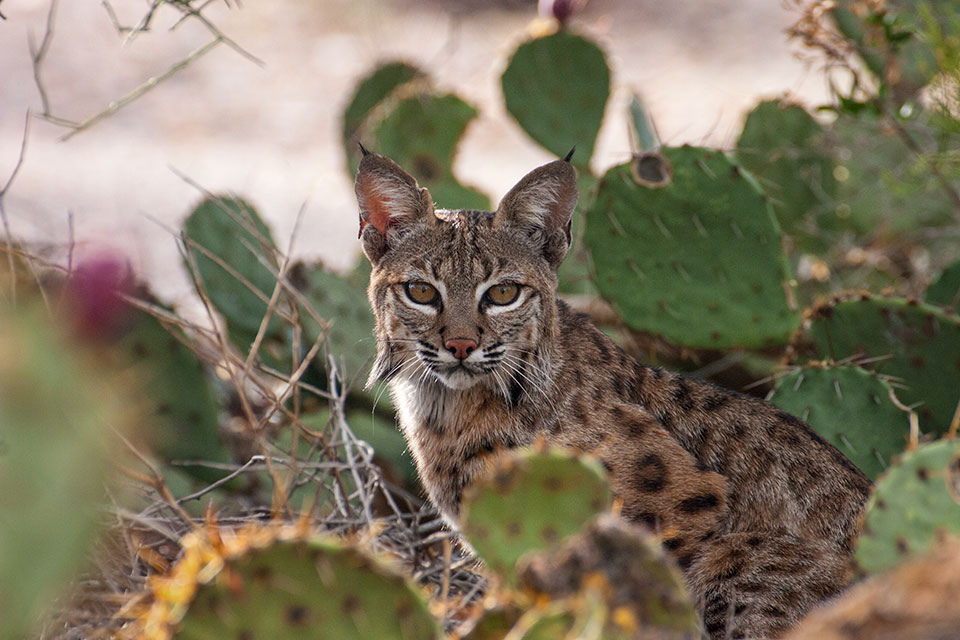
Prickly pear cactus pads surround a bobcat (Lynx rufus) in a Tucson backyard. Found throughout Arizona, bobcats are usually solitary and possess excellent night vision; their prey typically consists of rabbits, rodents and birds.
Doris Evans
CANON EOS 20D, 1/400 SEC, F/8, ISO 800, 400 MM LENS
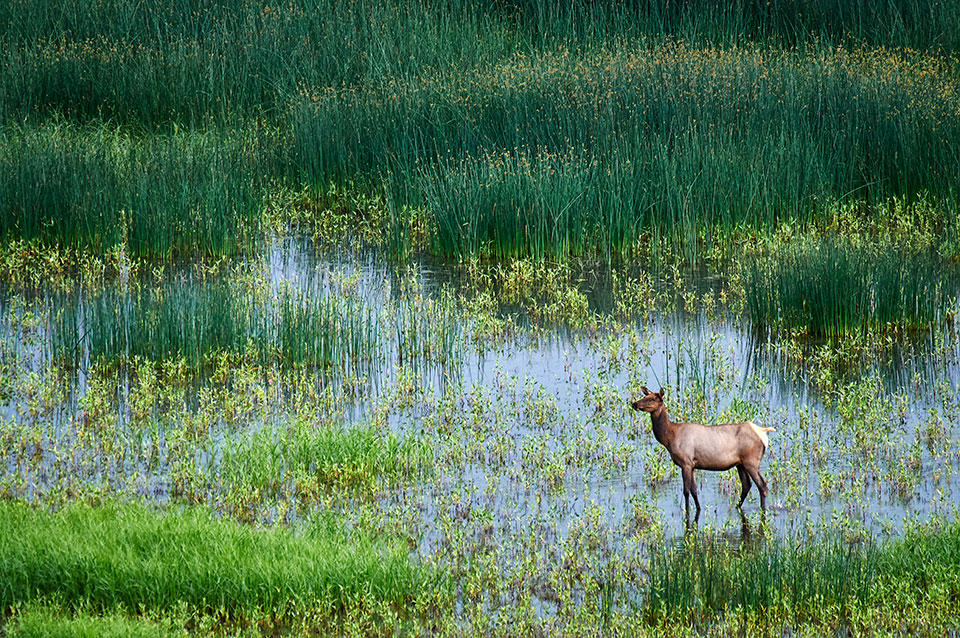
A cow elk (Cervus elaphus) stands in a marshy area at Mormon Lake, southeast of Flagstaff. Arizona is home to some 35,000 elk, all of which are descendants of elk relocated from Yellowstone National Park; the state’s native elk subspecies, the Merriam’s elk, was hunted to extinction by the early 1900s.
Shane McDermott
NIKON D300, 1/125 SEC, F/6.7, ISO 800, 650 MM LENS

